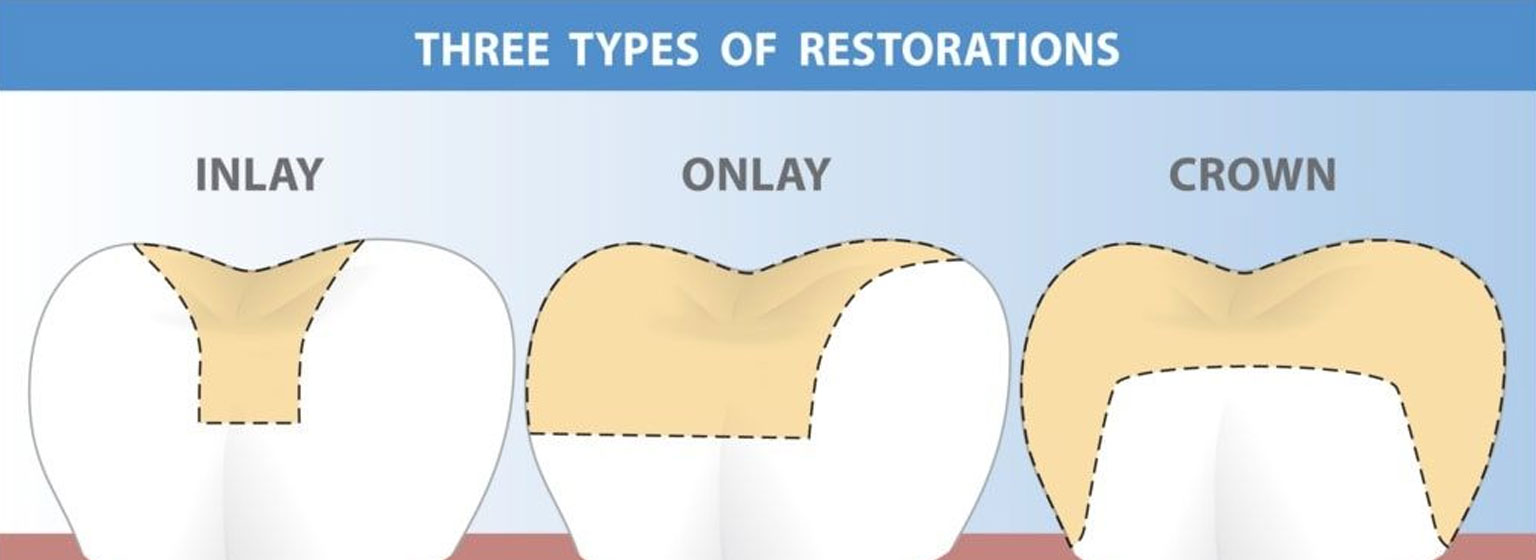Inlays and Onlays are custom fillings, fabricated in a lab. They use the existing tooth as a base and fit the inlay or Onlays onto the tooth in an area that has been prepared by the dentist. This is done to strengthen the tooth, restore its shape, and prevent future damage. An Inlay is done when there is no damage to the cusps of the tooth and the restoration can be placed right in the prepared area. An Onlay is used when the damage is a little more extensive, such as decay or a break in the tooth that involves one cusp or more. The decayed area of the tooth is first removed during the procedure. If the tooth is broken, the area is smoothed and shaped to better accept the Onlay. An impression of the tooth is then taken and sent to the lab. The restoration takes about 1-2 weeks to make, so a temporary inlay or onlay will be placed on the tooth during that time.
During the next visit, the inlay or Onlay will be placed into the mouth and set with a cement. An Onlay is a conservative option for restoring a tooth where a crown might otherwise be required. Ask our team if this is a good option for you.

FAQs – Frequently Asked Questions
- What are inlays and onlays used for? Inlays are a special type of filling that can address cavities and other damage, while onlays take care of more severe damage done to the cusps of a tooth. Both are cemented to the tooth after the damaged portion of the tooth is removed or prepared.
- How are inlays and onlays done? Inlays and onlays require two appointments to complete the procedure. During the first visit, the filling being replaced or the damaged or decaying area of the tooth is removed, and the tooth is prepared for the inlay or onlay.
- Are onlays painful? Some minor discomfort in the area is possible following the crown or onlay. Sometimes, depending on circumstances, the tooth and surrounding tissues may remain sore for a few weeks post treatment. The three most common reasons for pain are: Sore jaw joint from having your mouth open for a prolonged time.
